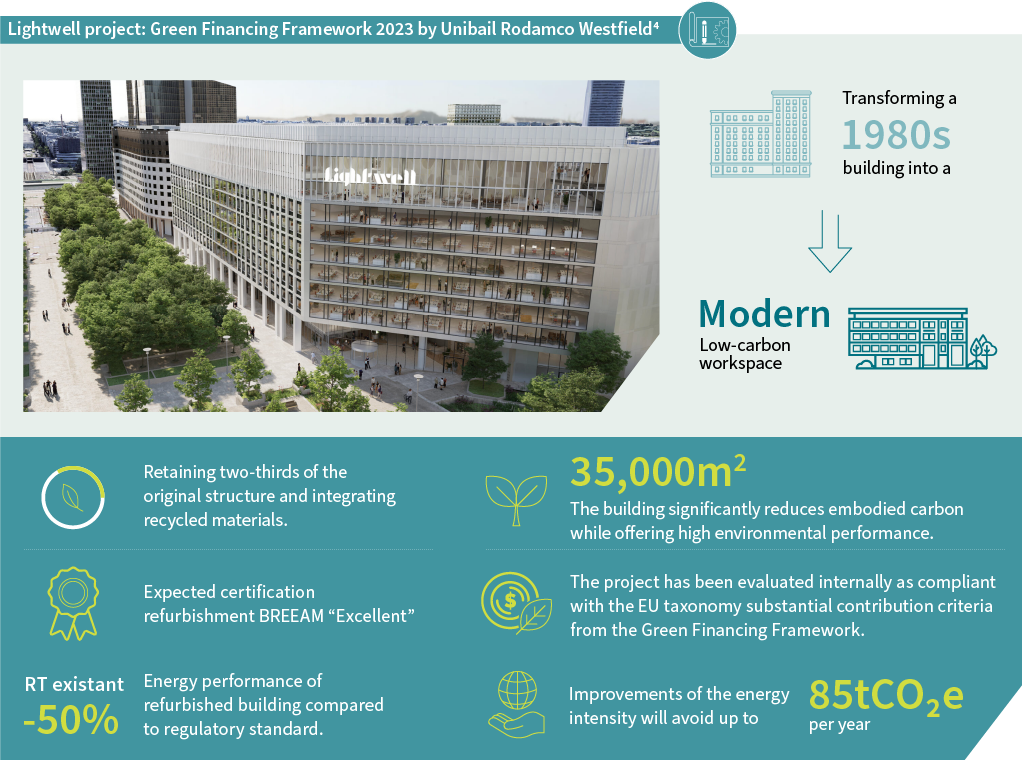
Investing in a sustainable future: Energy-efficient buildings
Green bonds are financial instruments designed to raise funds for projects that deliver positive environmental impacts.
Key facts and trends in buildings
Building sector
37% Global GHG emissions1
when including operational emissions (heating, cooling, lighting) and emissions from construction materials such as cement and steel.
Emissions trend
- Emissions have steadily increased over the past decades, largely driven by urbanization, population growth, and rising energy demand for heating, cooling, and appliances.
- Without significant changes, building emissions are expected to grow further by 30-50% by 2050 due to increased floor space and electrification demands, especially in emerging economies.
The road to net zero by 2050
To reach Net Zero by 2050, approximately US$2.5-3 trillion is required annually globally by 2030, focusing on energy efficiency retrofits, low-carbon construction materials, electrification of heating and cooling, and integration of smart building technologies. In 2024, energy efficiency investments in the building sector were around US$225 billion3, suggesting a shortfall of about U$2.3 trillion a year.

Where do green bonds fit in?
Green buildings

Eligible Projects Financed
- Energy Efficiency retrofits and renovations of existing buildings
- Construction of green certified new buildings
- Installation of on-site renewable energy systems
- Smart building infrastructure and energy management systems
Case study
Unibail-Rodamco-Westfield - Constructing a Sustainable Future
Unibail-Rodamco-Westfield (URW) is a leading European-listed real estate company headquartered in Paris, specializing in high-end commercial real estate. The company owns, develops, and operates major retail destinations under the Westfield brand in Europe and North America.
URW is redefining commercial spaces with sustainability at its core, with 90% of its European properties achieving top environmental ratings. In 2022, URW published its Green Financing Framework to finance or refinance green building projects through the issuance of green bonds.
Its recent green bonds financed the Lightwell project—a major office building renovation, transforming a 1980s building into a modern, low-carbon workspace. By retaining two-thirds of the original structure and integrating recycled materials, the 35,000 m² building significantly reduces embodied carbon while offering high environmental performance.
Lightwell embodies URW’s forward-thinking approach to sustainable office development—combining environmental rehabilitation, architectural innovation, and tenant-focused design to create a next generation workplace anchored in ESG leadership and urban renewal.

Green bonds are one of the most appropriate debt instrument to accompany issuers committed to transition to a low carbon economy. It supports the decarbonization of the building and construction sector by channeling capital towards projects that reduce GHG emissions and provide investors with a higher level of transparency and measurability. Contact us to explore more.
Sources:
[1]Source: UN Global Status Report for Buildings and Construction
[2]Source: World Economic Forum – Building the Gap: How to finance the net zero transition.
[3]Source: BloombergNEF Report, 30 January 2025, Global Investment in the Energy Transition Exceeded US$2 Trillion for the First time in 2024
[4]Source: Lightwell project: Green Financing Framework 2023 by Unibail Rodamco Westfield
Disclaimer
Companies shown are for illustrative purposes only as of 31 August 2025 and may no longer be in the portfolio later. It does not constitute investment research or financial analysis relating to transactions in financial instruments, nor does it constitute an other to buy or sell any investments, products or services, and should not be considered as solicitation or investment, legal or tax advice, a recommendation for an investment strategy or a personalized recommendation to buy or sell securities.
Not for Retail distribution: This document is intended exclusively for Professional, Institutional or Wholesale Clients / Investors only, as defined by applicable local laws and regulation. Circulation must be restricted accordingly.
This marketing communication does not constitute on the part of AXA Investment Managers a solicitation or investment, legal or tax advice. This material does not contain sufficient information to support an investment decision. It has been established on the basis of data, projections, forecasts, anticipations and hypothesis which are subjective. Its analysis and conclusions are the expression of an opinion, based on available data at a specific date.
All information in this document is established on data made public by official providers of economic and market statistics. AXA Investment Managers disclaims any and all liability relating to a decision based on or for reliance on this document. All exhibits included in this document, unless stated otherwise, are as of the publication date of this document. Furthermore, due to the subjective nature of these opinions and analysis, these data, projections, forecasts, anticipations, hypothesis, etc. are not necessary used or followed by AXA IM’s portfolio management teams or its affiliates, who may act based on their own opinions. Any reproduction of this information, in whole or in part is, unless otherwise authorised by AXA IM, prohibited.
In Australia, this document has been issued by AXA Investment Managers Australia Ltd (ABN 47 107 346 841 AFSL 273320) and is intended only for professional investors, sophisticated investors and wholesale clients as defined in the Corporations Act 2001 (Cth).


